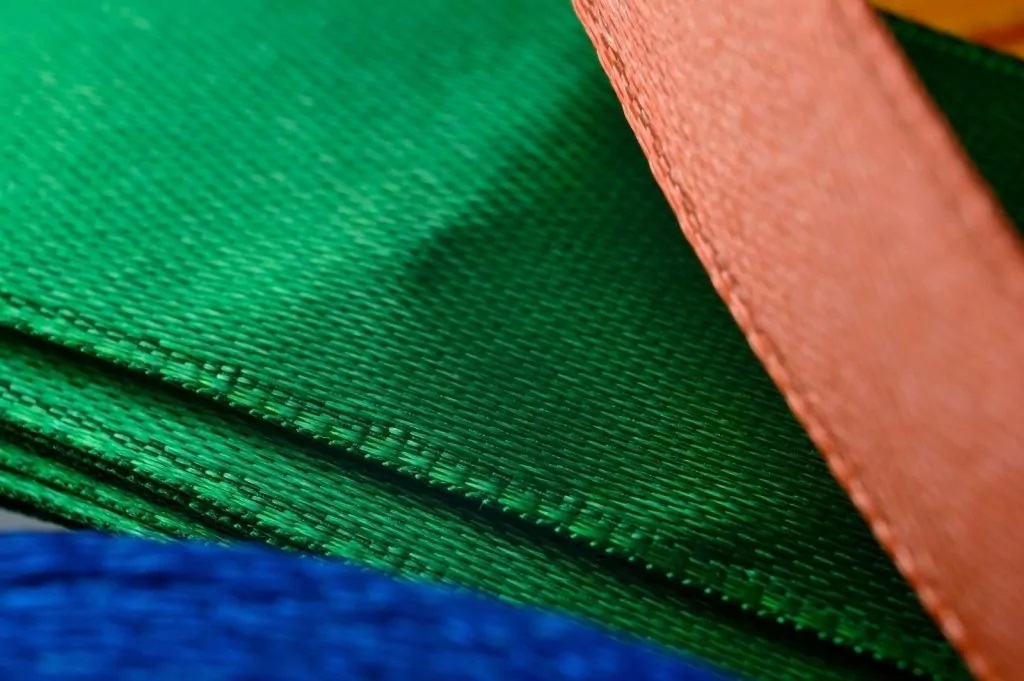Summary:
- Sublimation printing offers an economical and high-quality result;
- Several fabrics can be utilized to apply sublimation to your garments. In this article, you will find out the best ones and how to employ them;
- Boost your fashion collections by creating stunning 3D designs with Audaces360 multi-solution. Sign up for a free trial now!
When it comes to printing techniques, sublimation is one of the many options available. To utilize this method in the best way, the fabrics used must contain polyester.
This is because polyester facilitates the ink’s adherence to the fabric, resulting in better sublimation outcomes. The higher the polyester content in the fabric, the better the results.
In this article, we will provide you with information on the fabrics that are suitable for sublimation, including their absorption properties, and advise you on which materials to avoid.
Keep reading to learn more!
Sumário
How does the fabric sublimation process work?
Sublimation is a widely used printing technique known for its cost-effectiveness and excellent finish. This chemical process involves the transfer of ink from a solid state to a gaseous state, without passing through a liquid phase.
During the sublimation process, the ink on the paper, in its solid form, changes into vapor and bonds with the fabric. Although it may sound complex, sublimation requires only a design on sublimation paper, a press, and a smooth surface to execute.
It is important to note that sublimation is a fast process that can be carried out on a large scale. However, it is recommended to use this technique on fabrics with light colors, as sublimation is not suitable for dark fabrics.
Learn more: Get to know the top 6 textile printing types and their applications
Which fabrics are the best for sublimation printing?

For sublimation printing, the choice of fabric is crucial. The ideal fabrics are those that facilitate the transfer and adherence of ink with ease.
In practice, fabrics containing synthetic fibers, specifically polyester, deliver the best results. This is due to their unique properties that allow for brighter prints, vivid colors, and ink colors that closely match the original ones.
Therefore, if you want to achieve high-quality sublimation printing, it is essential to pay attention to the percentage of polyester in the fabric you choose.
Learn more: 9 fabrics with the perfect fit to use in your fashion collection
Fabrics containing less than 70% polyester
Regarding sublimation printing, fabrics containing a high percentage of polyester are the ideal choice. However, there are some alternatives with a lower percentage of polyester that can also be used for sublimation. Let’s take a look at some of these fabrics:
PET
Made from recycled PET bottles, this eco-friendly fabric is composed of 50% polyester and 50% cotton.
While it may be more comfortable to wear daily, its print quality is slightly inferior to that of other fabrics such as lycra.
Polyviscosis (PV)
Polyviscose is a blend of 67% polyester and 33% viscose, an artificial fiber made from cellulose.
It is commonly used for custom t-shirts and school uniforms and is considered to be a cooler knit.
Polycotton (PA)
Polycotton is a mesh similar to polyviscose and is made up of 67% polyester and 33% cotton.
It is also known as polyamide or nylon and is used, like PV, for personalized clothing and school uniforms.
However, it is prone to fading more easily than other fabrics.
Fabrics with 96% polyester
Poly cotton knit fabric
A popular knit used to make t-shirts, this mesh is composed of 96% polyester and 4% cotton.
The addition of cotton in the composition gives it a softer and smoother touch, making it comfortable to wear.
Fabrics with 98% polyester
Suplex
A highly versatile fabric, perfect for sports and fitness garments, suplex is composed of 98% polyester and 2% elastane. Therefore, it provides greater flexibility and adapts easily to the body.
In addition to sportswear, suplex is also used for children’s swimwear – and sublimation is very commonly used in these pieces.
Neoprene
Neoprene is a stretchy fabric that is vastly used in women’s garments, such as blazers and dresses, due to its ability to move with the body.
It contains 98% polyester and is highly durable, with sublimated prints lasting for many years without fading.
Learn more: What is industrial quality control in the textile business and how does it work?
100% polyester fabrics

Oxford
With its high durability and made of synthetic fibers, such as polyester, the Oxford fabric is a top choice for sublimation printing.
This versatile fabric can be used to create various items like uniforms, towels, pillows, curtains, napkins, clothing, and more
Learn more: Get to know all about Oxford fabric
Tactel
Designed for sports and particularly for surfing, Tactel fabric is made of 100% polyester and is perfect for sublimation printing.
It is lightweight and quick drying, making it a favorite among athletes.
Crepe
With its soft drape and a wide range of textures and thicknesses, crepe fabric made from polyester is a popular choice for both party and casual wear. It offers an excellent fit and is a top contender for sublimation printing.
Lycra
Known for its elasticity and malleability, Lycra is a versatile 100% synthetic fabric.
Its stretchy nature allows it to conform to the shape of the body, making it an ideal choice for activewear and other types of clothing.
Learn more: Know the textile symbols and the meanings of the clothing labels
Polypropylene (PP) Fabric
PP fabric is a top contender for sublimation printing due to its 100% polyester composition, which ensures maximum ink adhesion and quality.
This fabric is also breathable and lightweight, making it ideal for various items, including marine items, sportswear, bags, and protective clothing.
Which fabrics aren’t compatible with sublimation printing?
Sublimation is a printing technique that works best on synthetic fabrics. Natural fabrics, such as cotton and silk, are not suitable for sublimation as their fibers do not bond well with the inks, leading to poor quality and short-lived prints.
Despite this, if you are thinking of using these types of fabrics for sublimation, they must undergo prior special treatment. The treatment can help improve the fabric’s ability to bind with the inks, making them last longer.
It is important to note that synthetic fabrics such as polyester, nylon, and spandex are still the most compatible with sublimation and are preferred for achieving the best results.
Learn more: Learn what textile processing is and how it adds value to your production
Precautions for successful sublimation printing
You already know what the main types of fabrics for sublimation are, but it is also vital to know the basic care when applying this technique to your garments.
Follow these tips to avoid wasting your resources and improve your production outcomes.
Conduct texture and resistance tests
It’s always wise to test the texture and resistance of your fabric before sublimation printing. These tests will help you identify any changes or damages that may occur in the material during the process.
Adjust the proper temperature for each fabric
Different fabrics require different temperature settings for sublimation printing. 100% polyester fabrics are delicate and can be damaged by high temperatures. Hence, it’s essential to adjust the temperature of your machine according to the fabric’s specifications before printing.
Check the color result after the sublimation test
Some fabrics, such as PA and PV, may leave stains after sublimation printing, which can compromise the final result.
Therefore, it’s vital to wash the fabric after the printing process to check if the colors are well-fixed in the print. In case of any issue, you can adjust and repeat the process to get the desired result.
Print fabrics with more precision and quality with Audaces technology

To ensure your clothing company produces high-quality sublimated fabrics, it’s important to rely on machinery and software that work with excellence.
Audaces offers cutting-edge technology that brings precision to your production, providing multiple benefits to your daily operations.
Here’s how Audaces solutions can help your business achieve more:
Audaces Fashion Studio for creating stunning prints
This software program allows you to create designs in a 3D environment, saving time and optimizing the development of your sketches.
Moreover, Audaces Fashion Studio enables the integration between the creation and production stages.
With Audaces Fashion Studio, you can also:
- Create three-dimensional designs without using patterns;
- Visualize your own fabrics, colors and finishes in each model;
- Present 3D designs for your clients to approve visually;
- Avoid wasting time, money and materials;
- Approve design variants;
- Integrate your operations in real-time with print editors;
- And much more!
Audaces Jet Lux for printing your patterns
With the Jet Lux plotter, you can print patterns quickly, quietly, and cost-effectively.
If you want to excel in these processes, this plotter helps you make perfect traces, save time, and reduce waste.
With the Jet Lux Plotter, you also have:
- Specialized technical assistance;
- A silent machine;
- Cost-effective print cartridges;
- Automatic voltage system;
- Sensors to avoid paper and cartridge shortages;
- Low maintenance cost.
If you’re interested in learning more about fabric compositions and their influence on sublimation printing, download our free e-book now!
FAQ
Fabric sublimation is a unique chemical process that enables printing to pass from a solid state directly into a gaseous state without first converting into a liquid.
Sublimation printing works best on fabrics that contain polyester in their composition. These fabrics allow ink to easily transfer and adhere to the material.
Natural fabrics like cotton and silk are not well-suited for sublimation printing as the fibers in these materials do not readily bind to the inks used in sublimation. However, with proper treatment, it is possible to achieve higher quality prints on these fabrics.











2 Responses
Thanks to improve my knowledge.
Regards
Hi Ajay, thank you so much for your positive feedback!